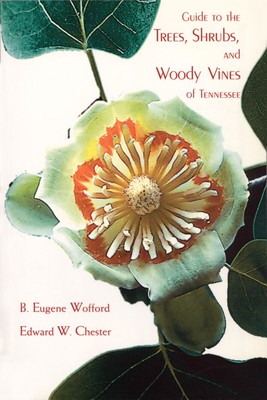
- We will send in 10–14 business days.
- Author: S Eugene Wofford
- Publisher: Univ Tennessee Press
- ISBN-10: 1572332050
- ISBN-13: 9781572332058
- Format: 15 x 22.9 x 1.5 cm, minkšti viršeliai
- Language: English
- SAVE -10% with code: EXTRA
Reviews
Description
Tennessee is home to more than four hundred species of woody plants, but until now there has been no comprehensive guide to them. This work fills that gap, as B. Eugene Wofford and Edward W. Chester provide identification keys to all native and naturalized species of trees, shrubs, and woody vines found in the state.
The book is organized by plant types, which are divided into gymnosperms and angiosperms. For each species treated, the authors include both scientific and common names, a brief description, information on flowering and fruiting seasons, and distribution patterns. Photographs illustrate more than ninety five percent of species, and the text is fully indexed by families and genera, scientific names, and common names. A glossary is keyed to photographs in the text to illustrate definitions. In their introduction, Wofford and Chester provide an overview of the Tennessee flora and their characteristics, outline Tennessee's physiographic regions, and survey the history of botanical research in the state. The authors also address the historical and environmental influences on plant distribution and describe comparative diversity of taxa within the regions.Guide to Trees, Shrubs, and Woody Vines of Tennessee will be a valuable resource and identification guide for professional and lay readers alike, including students, botanists, foresters, gardeners, environmentalists, and conservationists interested in the flora of Tennessee. The Authors: B. Eugene Wofford is director of the herbarium at the University of Tennessee, Knoxville. He is the author of numerous articles and books, including Guide to the Vascular Plants of the Blue Ridge. Edward W. Chester is professor of biology at Austin Peay State University. His articles on subjects ranging from taxonomy to plant systematics have appeared in Journal of the Southern Appalachian Botanical Society, Bulletin of the Torrey Botanical Club, Wetlands, and many other publications.
EXTRA 10 % discount with code: EXTRA
The promotion ends in 21d.08:49:03
The discount code is valid when purchasing from 10 €. Discounts do not stack.
- Author: S Eugene Wofford
- Publisher: Univ Tennessee Press
- ISBN-10: 1572332050
- ISBN-13: 9781572332058
- Format: 15 x 22.9 x 1.5 cm, minkšti viršeliai
- Language: English English
Tennessee is home to more than four hundred species of woody plants, but until now there has been no comprehensive guide to them. This work fills that gap, as B. Eugene Wofford and Edward W. Chester provide identification keys to all native and naturalized species of trees, shrubs, and woody vines found in the state.
The book is organized by plant types, which are divided into gymnosperms and angiosperms. For each species treated, the authors include both scientific and common names, a brief description, information on flowering and fruiting seasons, and distribution patterns. Photographs illustrate more than ninety five percent of species, and the text is fully indexed by families and genera, scientific names, and common names. A glossary is keyed to photographs in the text to illustrate definitions. In their introduction, Wofford and Chester provide an overview of the Tennessee flora and their characteristics, outline Tennessee's physiographic regions, and survey the history of botanical research in the state. The authors also address the historical and environmental influences on plant distribution and describe comparative diversity of taxa within the regions.Guide to Trees, Shrubs, and Woody Vines of Tennessee will be a valuable resource and identification guide for professional and lay readers alike, including students, botanists, foresters, gardeners, environmentalists, and conservationists interested in the flora of Tennessee. The Authors: B. Eugene Wofford is director of the herbarium at the University of Tennessee, Knoxville. He is the author of numerous articles and books, including Guide to the Vascular Plants of the Blue Ridge. Edward W. Chester is professor of biology at Austin Peay State University. His articles on subjects ranging from taxonomy to plant systematics have appeared in Journal of the Southern Appalachian Botanical Society, Bulletin of the Torrey Botanical Club, Wetlands, and many other publications.


Reviews